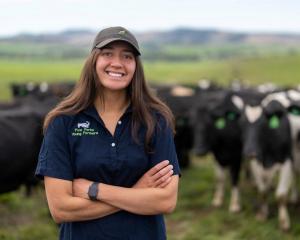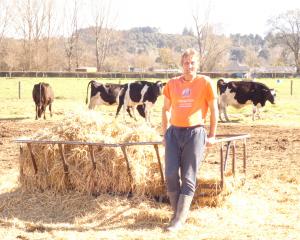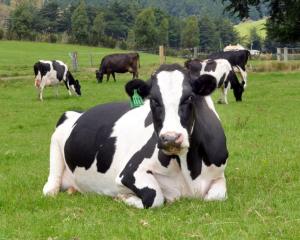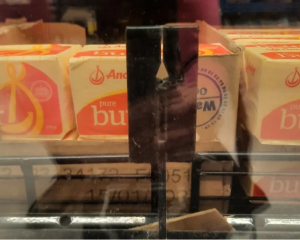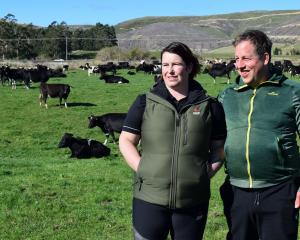
The giant co-op raised the 2023-24 season forecast milk price range in an October 9 announcement to $6.50 to $8 a kilogram of milksolids for a new midpoint of $7.25/kg, up 50c.
That’s not expected to pave the way for more farmer spending, though, as there’s plenty of distance to cover before the final payout is known next October.
They’re also mindful the $7.25/kg midpoint is short of Dairy NZ’s average $7.65/kg break-even mark.
Federated Farmers Dairy vice-chairman Karl Dean said the increased milk price was timely.
"It just gives a bit more cash to bridge the gap as the forecast payout is still below Dairy NZ’s break even price, but it does bridge that gap, so hopefully farmers won’t be losing as much money as what the forecast was beforehand."
The positive news was the dairy futures market was above the break even point, so hopefully farmers would see further upwards pressure on the payout in coming months, provided Global Dairy Trade (GDT) auctions continued to increase, he said.
He said farmers had been looking at every line in their balance sheet and were unlikely to dust off the chequebooks.
"I don’t think so. We would need to see an eight in front of the forecast before that starts to happen and we’re probably a good dollar away from that and farmers getting a bit of confidence and saying, ‘all right, there is a bit of money to spare to go and upgrade machinery or to do infrastructure upgrades again’."
Dairy farmers usually have a reasonable indication of the payout direction by the end of January, so the holding patterns would continue.
Until then they would continue to look hard for the best feed prices rather than repeating previous buying patterns. If a staff member left over the next few months, farm owners and sharemilkers would look at running fewer staff and perhaps paying a bonus rather than finding a replacement.
Increased automation on the back of previous high payouts and during the labour squeeze over Covid-19 lockdowns was paying off.
Most farmers would largely continue to run with budgets tightened when the milk price forecasts began dropping.
Mr Dean said the lift would mean farmers might revisit planned cuts which were going to affect next year’s milk production.
"The key is to not cut costs that are going to affect production or next year’s production and it’s all about making sure we are not going to cut our noses to spite our face and long term you’re still able to be a profitable and viable business."
A falling milk production year after year was unwanted as it was not healthy for Fonterra, Synlait, Westland and other milk processors to have a lot of stainless steel operating below capacity, he said.
He said farmers had an inkling a rise was coming after the last couple of GDT auctions and an improved futures market.
"Most farmers were expecting a lift to come and it is very welcome. Obviously it’s off the back of expected lower production and current lower production than normal from the bad spring the North Island is having and the forecast El Nino. I think most South Island people struggled in August, but September’s definitely been an uplift for most and we are just waiting for spring to come."
Canterbury had a record warm September, but it was also too dry for irrigators to run effectively.
Mr Dean said their North Canterbury operation had been without a frost for three weeks and the last two lots of rain would assist grass growth.
Fonterra chief executive Miles Hurrell said the improved outlook reflected both supply and demand dynamics.
"Here in New Zealand we’re forecasting collections to be slightly below last season, while aggregate milk growth in key export countries is expected to be below average for FY24. The El Nino weather pattern may have further impacts on supply, and this could be driving recent buyer sentiment.
"On the demand side, we have seen increases in recent GDT events. While this has been encouraging, it is not yet clear whether the stronger demand from China will be sustained. For other key regions, customers remain relatively cautious in terms of their forward purchases."
Sales contracts were still at the early stage, so volatility in commodity prices remained, while exchange rate volatility was another factor, he said.
"We’ll continue to let our farmers and the market know as soon as we can when we think things have materially shifted," Mr Hurrell said.



